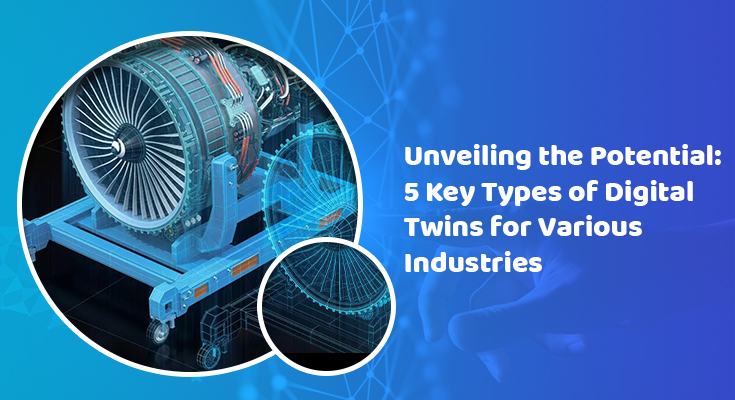In the era of digital transformation, industries are leveraging innovative technologies to enhance efficiency, productivity, and decision-making. One such groundbreaking concept making waves across diverse sectors is the use of the digital twin model. A digital twin is a virtual replica of a physical object, process, or system that allows for real-time monitoring, analysis, and simulation. Explore and choose the perfect virtual reality with one of the premier holographic experience providers i.e., Vision3D. Digital twin technology is proving to be a game-changer, offering numerous applications across various industries. Let’s delve into five key types of digital twins and explore their potential across different sectors.
Five Types of Digital Twins
Product Digital Twins in Manufacturing
In the manufacturing industry, product digital twins are virtual representations of physical products. These digital twin models go beyond simple 3D models, incorporating real-time data from sensors embedded in physical objects during the entire product lifecycle. This allows manufacturers to monitor performance, predict maintenance needs, and optimize processes. For instance, in the automotive industry, product digital twins enable continuous monitoring of a vehicle’s health, helping manufacturers identify potential issues, reduce downtime, and enhance overall product quality.
Process Digital Twins in Industrial Operations
Process digital twins simulate and monitor entire industrial processes, providing a virtual mirror of the physical operations. This type of digital twin is particularly valuable in optimizing efficiency, reducing operational costs, and ensuring safety. In the oil and gas sector, process digital twins can replicate the complex operations of drilling platforms or refineries, allowing operators to identify bottlenecks, optimize workflows, and improve overall productivity. The ability to simulate different scenarios in real-time enables quick decision-making and response to dynamic changes in the industrial environment.
Healthcare Digital Twins for Personalized Medicine
In the healthcare sector, digital twins are revolutionizing the approach to patient care and drug development. Healthcare digital twins integrate patient data, genetic information, and other relevant parameters to create personalized models of individuals. These models can be used to simulate the effects of various treatments, predict disease progression, and optimize therapeutic strategies. Pharmaceutical companies are also using digital twin models to simulate drug interactions, accelerating the drug development process. This personalized approach to medicine enhances treatment outcomes, reduces adverse effects, and ultimately improves patient care.
Building and Infrastructure Digital Twins in Construction
Digital twins are reshaping the construction and infrastructure development landscape. Building and infrastructure digital twins provide a comprehensive view of construction projects, enabling stakeholders to monitor progress, identify potential issues, and optimize resource allocation. In smart cities, these digital twins can simulate the impact of various urban planning scenarios, helping city planners make informed decisions about infrastructure development, transportation, and resource management. The construction industry benefits from improved project timelines, reduced costs, and enhanced sustainability through the implementation of digital twins.
City Digital Twins for Smart Urban Planning
City digital twins take the concept of digital twins to a larger scale, focusing on the entire urban environment. These digital replicas of cities integrate data from various sources, including IoT devices, sensors, and social media, to create a holistic view of urban systems. City digital twin models assist in urban planning, traffic management, energy optimization, and emergency response. By simulating different scenarios, city planners can make informed decisions to create more sustainable, resilient, and livable urban spaces. This technology is pivotal in the development of smart cities, where data-driven insights lead to improved quality of life for residents.
Conclusion.
Digital twins are unlocking new possibilities across diverse industries, providing a dynamic approach to monitoring, simulating, and optimizing physical entities and processes. From manufacturing and healthcare to construction and urban planning, the potential applications of digital twin models are vast and transformative. As technology continues to advance, we can expect even more industries to embrace digital twins, pushing the boundaries of innovation and redefining the way we approach complex systems and challenges. The journey towards a digitally enhanced future is well underway, and digital twins are at the forefront, paving the way for a more efficient, sustainable, and connected world.
